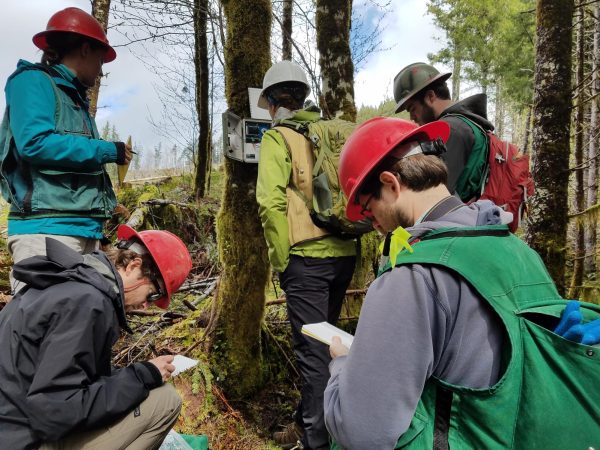Oregon and Pacific Northwest can expect colder, wetter winter, NOAA says
Students adjusting to the dreary weather this Friday at the Corvallis campus. This rainy season is expected to be especially cold and wet.
November 5, 2022
Oregonians: expect colder than average temperatures and more precipitation than usual this winter.
An Oct. 20 press release from the National Oceanic and Atmospheric Administration shows that while the Pacific Northwest can expect similar conditions, much of the rest of the nation can expect warmer, drier conditions, with the south and southwest particularly affected.
Nationwide, the dry, warm conditions are expected to exacerbate the ongoing drought.
“Drought conditions are now present across approximately 59% of the country,” said Jon Gottschalck in the press release. Gottschalck, Chief of the NOAA’s Climate Prediction Center’s Operational Prediction Branch, added that parts of the Western U.S and Great Plains will be the hardest hit over the winter.
However, in Oregon drought conditions are expected to improve statewide, with the NOAA expecting drought conditions to come to an end in northern and western parts of the state.
Oregon sorely needs this improvement in conditions since, according to the Oregon Water Resources Department’s website, the state “is in the worst megadrought on record.”
The Oregon State Legislature has given the Oregon Department of Agriculture grant money to provide some relief to farmers and ranchers affected by the drought.
“The Oregon Legislature granted ODA $40 million in Oregon Disaster Assistance Program funding to help offset some of the losses farmers and ranchers experienced during the natural disasters in 2021,” said Andrea Cantu-Schomus, director of Communications for the Oregon Department of Agriculture.
According to Cantu-Schomus, these disasters included the ongoing drought, as well as excessive heat, a deep freeze and wildfires.
NOAA forecasters have been able to make more detailed forecasts this year, after the agency acquired a pair of Hewlett Packard Enterprise Cray supercomputers, according to a June press release.
The supercomputers, which are operated for the NOAA by General Dynamics, are able to operate at a speed three times faster than NOAA’s former system.
According to the NOAA Press release, the supercomputers, named Dogwood and Cactus, are the 49th and 50th most powerful computers on Earth. The new units replace the NOAA’s Cray and IBM supercomputers in Reston, Va., and Orlando, Fl.
“NOAA’s new supercomputers are enabling us to develop even better, more detailed forecast capabilities,” said Michael Farrar, director of the National Centers for Environmental Prediction in the press release.
While Oregon may be getting a reprieve, NOAA forecasters say that, along with the National Integrated Drought Information System, will continue to monitor worsening drought conditions nationwide.

























































































































